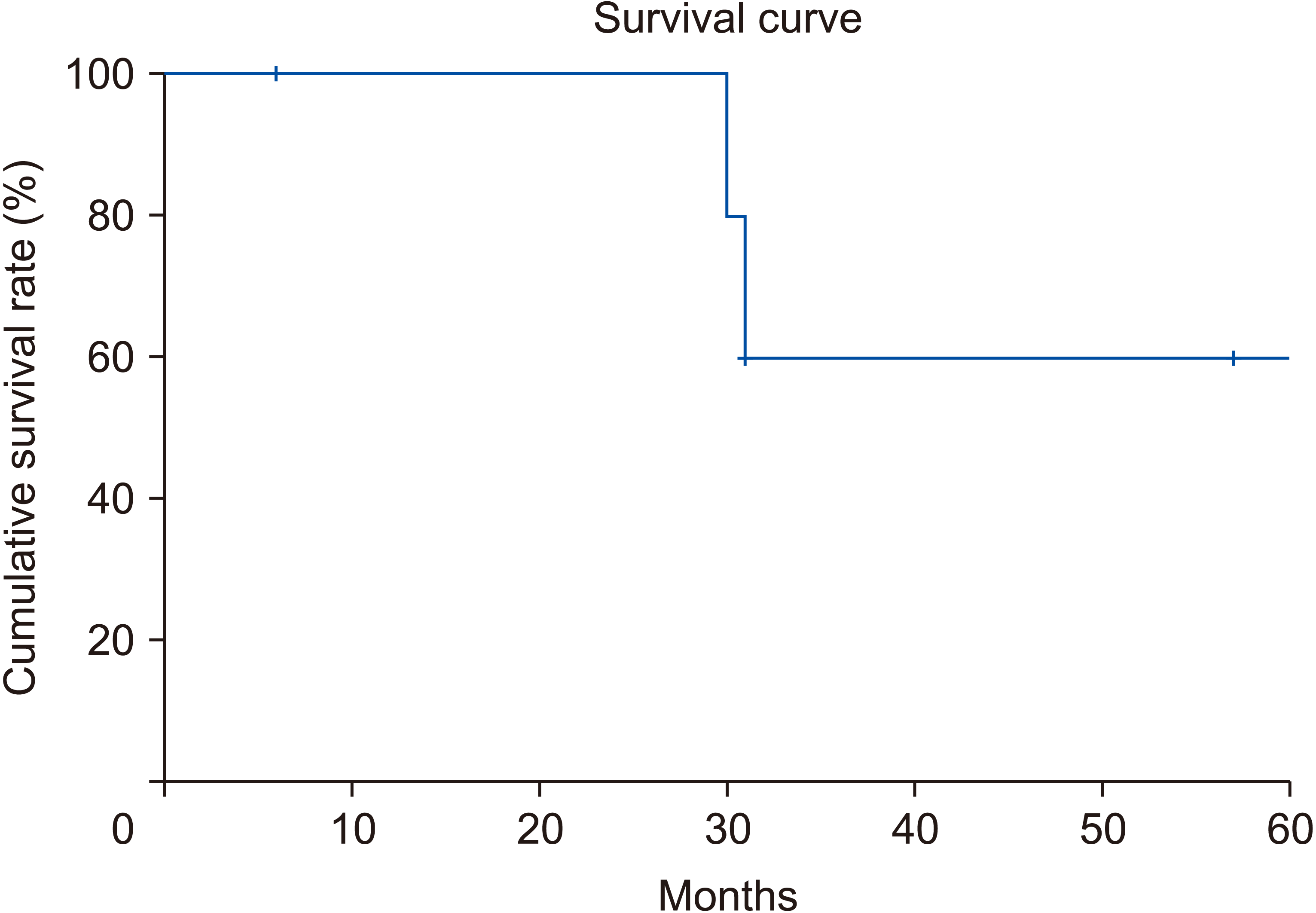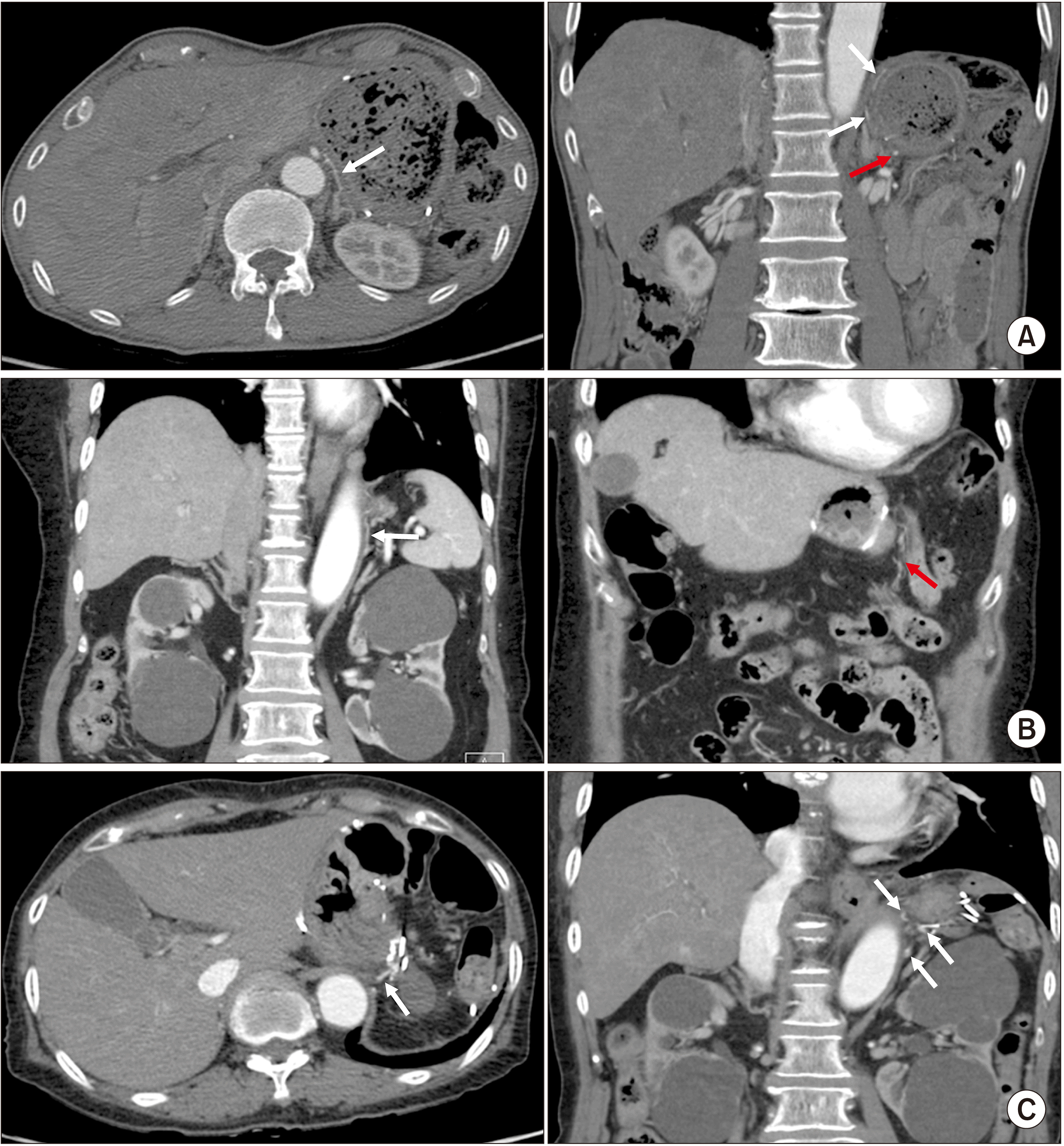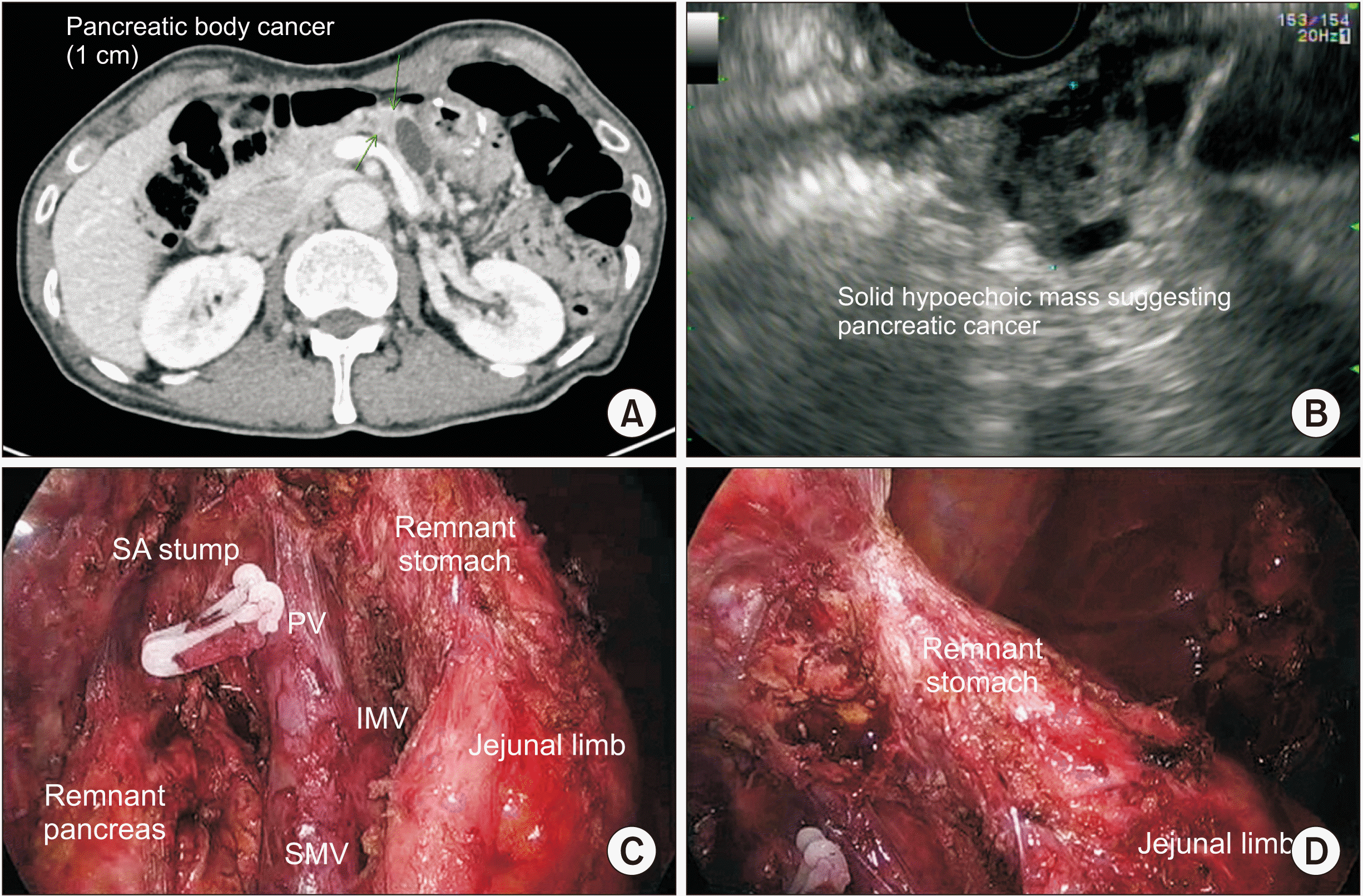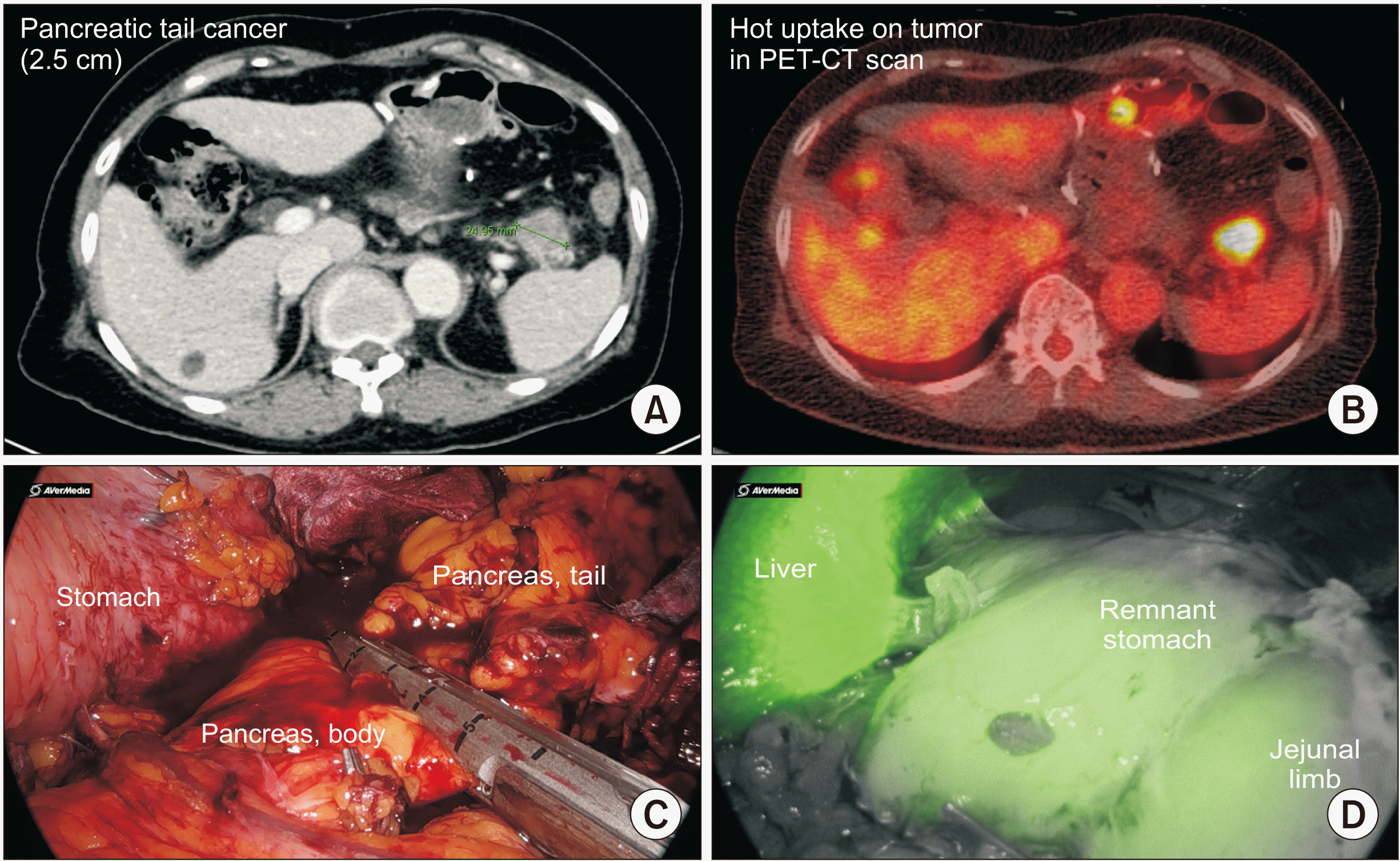1. Rawla P, Sunkara T, Gaduputi V. 2019; Epidemiology of pancreatic cancer: global trends, etiology and risk factors. World J Oncol. 10:10–27. DOI:
10.14740/wjon1166. PMID:
30834048. PMCID:
PMC6396775.
3. Luo J, Xiao L, Wu C, Zheng Y, Zhao N. 2013; The incidence and survival rate of population-based pancreatic cancer patients: Shanghai Cancer Registry 2004-2009. PLoS One. 8:e76052. Erratum in: PLoS One 2014;9. DOI:
10.1371/journal.pone.0076052. PMID:
24130758. PMCID:
PMC3794034.
4. McGuigan A, Kelly P, Turkington RC, Jones C, Coleman HG, Mc-Cain RS. 2018; Pancreatic cancer: a review of clinical diagnosis, epidemiology, treatment and outcomes. World J Gastroenterol. 24:4846–4861. DOI:
10.3748/wjg.v24.i43.4846. PMID:
30487695. PMCID:
PMC6250924.
5. Moekotte AL, Rawashdeh A, Asbun HJ, Coimbra FJ, Edil BH, Jarufe N, et al. 2020; Safe implementation of minimally invasive pancreas resection: a systematic review. HPB (Oxford). 22:637–648. DOI:
10.1016/j.hpb.2019.11.005. PMID:
31836284.
6. de Rooij T, van Hilst J, van Santvoort H, Boerma D, van den Boezem P, Daams F, et al. 2019; Minimally invasive versus open distal pancreatectomy (LEOPARD): a multicenter patient-blinded randomized controlled trial. Ann Surg. 269:2–9. DOI:
10.1097/SLA.0000000000002979. PMID:
30080726.
7. Korrel M, Vissers FL, van Hilst J, de Rooij T, Dijkgraaf MG, Festen S, et al. 2021; Minimally invasive versus open distal pancreatectomy: an individual patient data meta-analysis of two randomized controlled trials. HPB (Oxford). 23:323–330. DOI:
10.1016/j.hpb.2020.10.022. PMID:
33250330.
9. Hong SS, Hwang HK, Lee WJ, Kang CM. 2020; Feasibility and safety of laparoscopic radical distal pancreatosplenectomy with adrenalectomy in advanced pancreatic cancer. Ann Surg Oncol. 27:5235–5236. DOI:
10.1245/s10434-020-08670-9. PMID:
32474822.
10. Kang CM. 2020; ASO author reflections: from concept to real clinical practice of laparoscopic distal pancreatectomy for left-sided pancreatic cancer. Ann Surg Oncol. 27:5237–5238. DOI:
10.1245/s10434-020-08676-3. PMID:
32462529.
11. Chong JU, Kim SH, Hwang HK, Kang CM, Lee WJ. 2017; Yonsei criteria: a clinical reflection of stage I left-sided pancreatic cancer. Oncotarget. 8:110830–110836. DOI:
10.18632/oncotarget.22734. PMID:
29340019. PMCID:
PMC5762287.
12. Lee SH, Kang CM, Hwang HK, Choi SH, Lee WJ, Chi HS. 2014; Minimally invasive RAMPS in well-selected left-sided pancreatic cancer within Yonsei criteria: long-term (>median 3 years) oncologic outcomes. Surg Endosc. 28:2848–2855. DOI:
10.1007/s00464-014-3537-3. PMID:
24853839.
13. Kim CY, Lee SH, Jeon HM, Kim HK, Kang CM, Lee WJ. 2014; AFP-producing acinar cell carcinoma treated by pancreaticoduodenectomy in a patient with a previous radical subtotal gastrectomy by gastric cancer. Korean J Hepatobiliary Pancreat Surg. 18:33–37. DOI:
10.14701/kjhbps.2014.18.1.33. PMID:
26155245. PMCID:
PMC4492330.
14. Lee D, Lee JH, Choi D, Kang CM, Chong JU, Kim SC, et al. 2017; Surgical strategy and outcome in patients undergoing pancreaticoduodenectomy after gastric resection: a three-center experience with 39 patients. World J Surg. 41:552–558. DOI:
10.1007/s00268-016-3729-1. PMID:
27730351.
15. Fukuta M, Tomibayashi A, Tsuneki T, Nishioka K, Matsuo Y, Mori O, et al. 2020; Pancreaticoduodenectomy after distal gastrectomy: a case series. Int J Surg Case Rep. 76:240–246. DOI:
10.1016/j.ijscr.2020.09.169. PMID:
33053481. PMCID:
PMC7566198.
16. Kim SH, Hwang HK, Kang CM, Lee WJ. 2012; Pancreatoduodenectomy in patients with periampullary cancer after radical subtotal gastrectomy for gastric cancer. Am Surg. 78:E164–E167. DOI:
10.1177/000313481207800319.
17. Kawasaki Y, Hwang HK, Kang CM, Natsugoe S, Lee WJ. 2018; Improved perioperative outcomes of laparoscopic distal pancreatosplenectomy: modified lasso technique. ANZ J Surg. 88:886–890. DOI:
10.1111/ans.14351. PMID:
29266719.
18. De Nardi P, Elmore U, Maggi G, Maggiore R, Boni L, Cassinotti E, et al. 2020; Intraoperative angiography with indocyanine green to assess anastomosis perfusion in patients undergoing laparoscopic colorectal resection: results of a multicenter randomized controlled trial. Surg Endosc. 34:53–60. DOI:
10.1007/s00464-019-06730-0. PMID:
30903276.
19. Abdelwahab M, Spataro EA, Kandathil CK, Most SP. 2019; Neovascularization perfusion of melolabial flaps using intraoperative indocyanine green angiography. JAMA Facial Plast Surg. 21:230–236. DOI:
10.1001/jamafacial.2018.1874. PMID:
30730539. PMCID:
PMC6537835.
20. Asari S, Toyama H, Goto T, Yamashita H, Nanno Y, Ishida J, et al. 2021; Indocyanine green (ICG) fluorography and digital subtraction angiography (DSA) of vessels supplying the remnant stomach that were performed during distal pancreatectomy in a patient with a history of distal gastrectomy: a case report. Clin J Gastroenterol. 14:1749–1755. DOI:
10.1007/s12328-021-01493-5. PMID:
34342840.






 PDF
PDF Citation
Citation Print
Print





 XML Download
XML Download